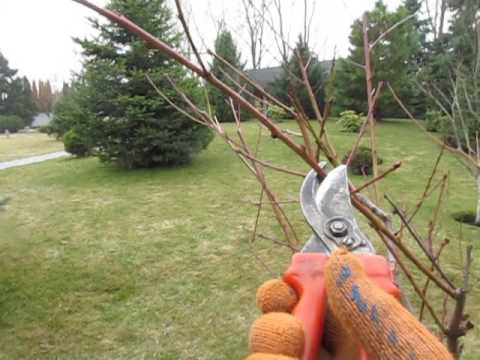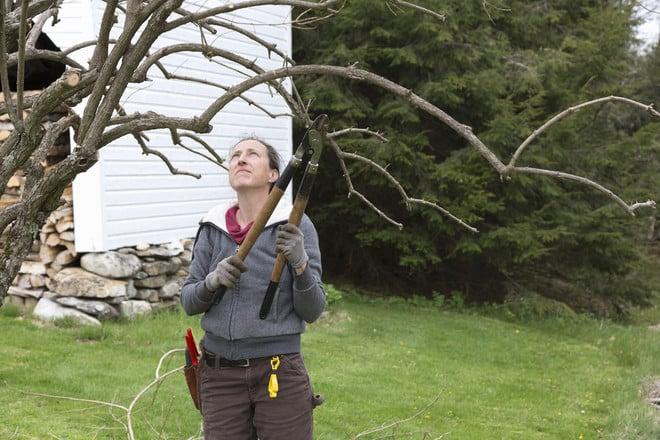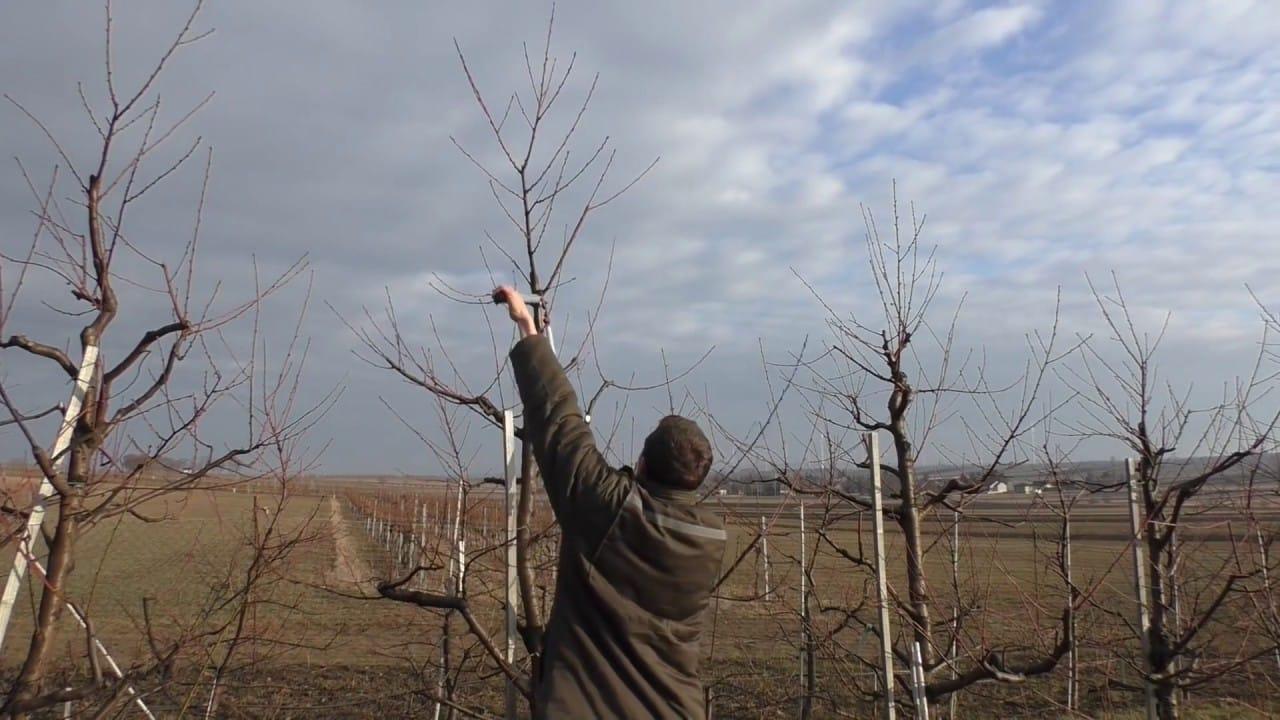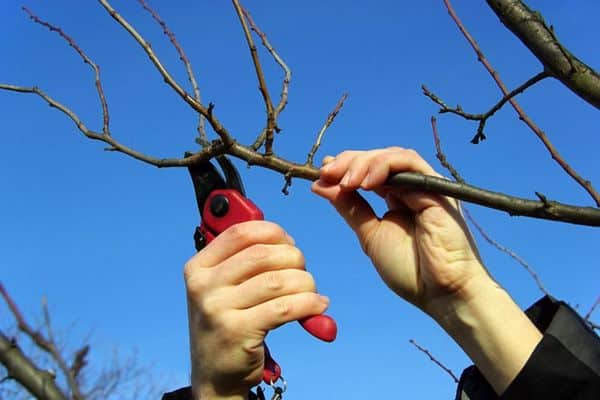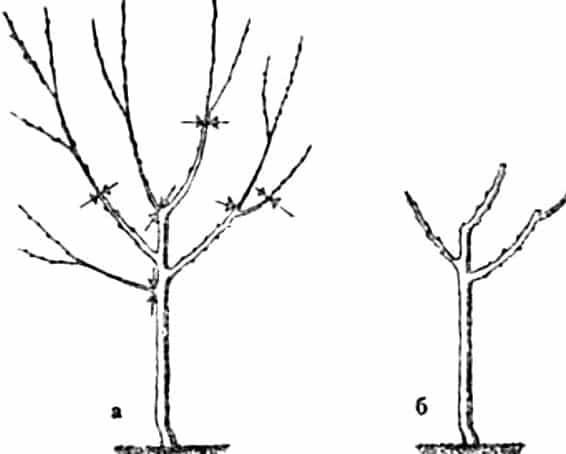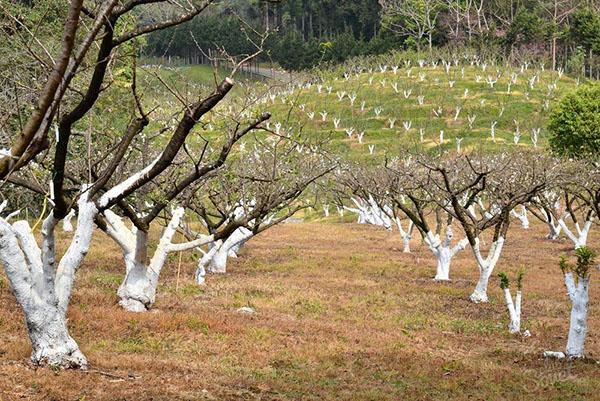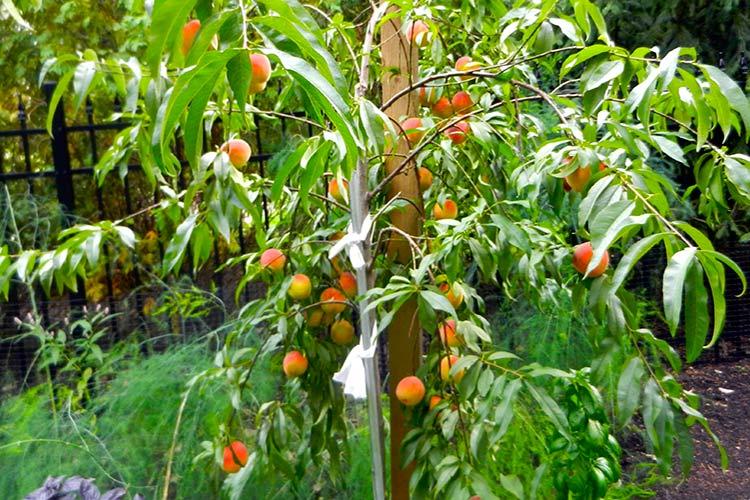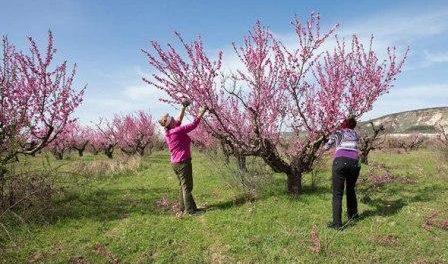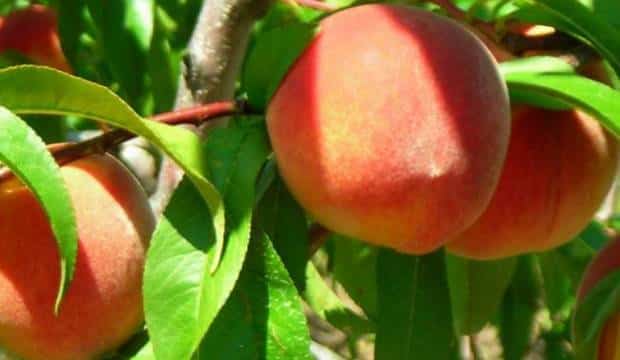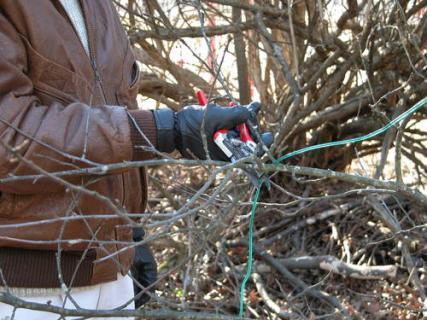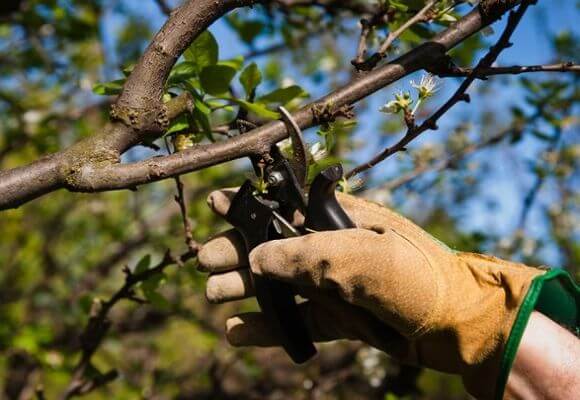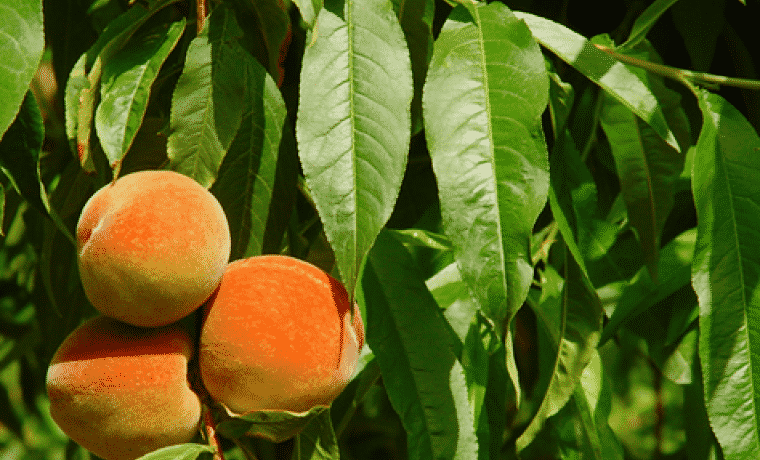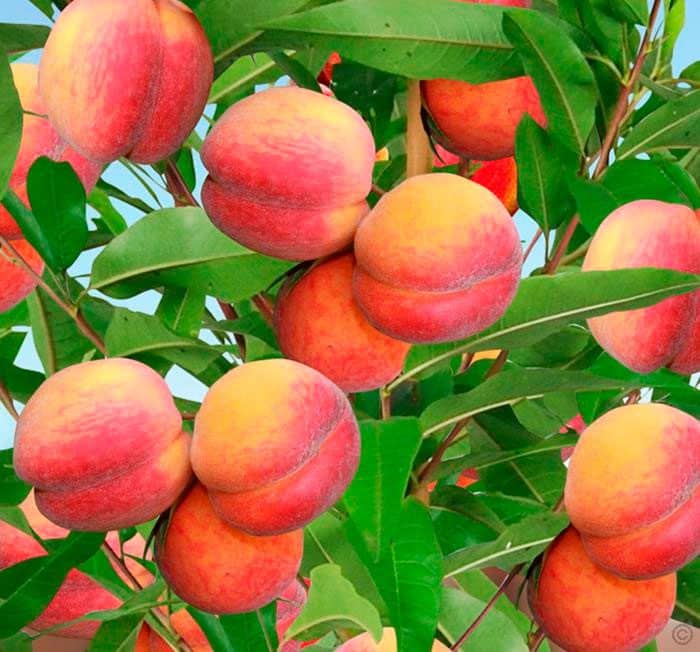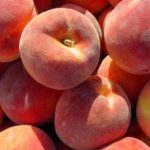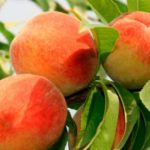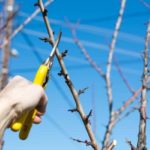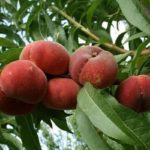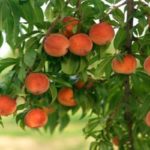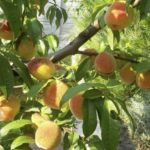One of the capricious crops, the peach, requires increased attention and knowledge of agricultural technology from the gardener. In care, a mandatory procedure is considered to be the formation of the crown of a garden crop and the regulation of fruiting by pruning. Without it, the tree will not be able to develop properly, and high yields depend directly on this procedure. But not everyone knows how to trim a peach to get a positive result.
- Goals and objectives of pruning
- What tools and materials will be needed
- Types of pruning
- Formative
- Rejuvenating
- Restorative
- Regulatory
- Timing of work
- Spring
- Summer
- Nuances of autumn pruning
- Why autumn pruning increases yields
- How does the growing area affect the timing of pruning?
- Technology and sequence of formation of various types of crowns
- Cup-shaped
- Bush-like
- For a replacement knot
- Fan
- American
- Features of the procedure
- For young seedlings
- For fruit bearing trees
- For the old peach
- Care after pruning
- Common Mistakes
Goals and objectives of pruning
For the peach fruit crop, the role of annual pruning is to:
- activate the growth of young shoots;
- increase fruiting time;
- rejuvenate the tree;
- increase peach resistance to frost and disease;
- make the crown neat and aesthetic.
The peach tree will not be able to “feed” all the shoots that appear, so the excess ones must be removed. Then there will be enough strength to ripen the fruits. And to increase the sugar content of the crop, sunlight is needed. This will not happen with a thickened crown.
Therefore, peaches on the branches will rot more often, since they will not have enough air for ventilation.
A regularly carried out procedure will renew the tree, make the crop productive, with strong immunity.
What tools and materials will be needed
In order to trim excess peach branches, you need to prepare for the procedure. Be sure to remove branches:
- pruning shears with tightly interlocking cutting edges;
- lopper with long handles;
- garden saw;
- garden knife;
- scissors with rounded blade ends and strong handle rings.
All tools are well sharpened, using them to trim both thin and thick shoots. Thick branches can only be removed with a saw, but for medium ones a lopper is suitable. Thin branches and weak growth can be trimmed with scissors or pruning shears, sharp, without jagged edges on the cutting surfaces.
It is necessary to have a sharpening wheel nearby in case the saw or knife becomes dull.Before using the instrument, the cutting parts are disinfected by wiping with medical alcohol or immersing in a solution of potassium permanganate. Prepare garden varnish and disinfectant solutions for treating damaged wood immediately before the procedure.
Types of pruning
For upward-growing fruit crops, pruning is necessary, the purpose of which is to form a bush with 4-7 skeletal branches. But there are several types of pruning that have other goals and objectives. They are used depending on the age of the tree and the time of year.
Formative
The formation of the tree crown begins in the nursery, when the seedling is prepared. By cutting off the top of the main shoot, branching of the crown is achieved. In the future, annual branches are shortened annually, achieving the formation of a round or cup-shaped crown with the correct arrangement of branches. Every year the degree of pruning is reduced, and the pruning is stopped when the crown has formed and the tree begins to bear fruit.
Rejuvenating
Old peach trees need this type of pruning. Fruit-bearing peach branches are removed to the place where good tops have grown, and the part of the new shoots that will fill the bare spots is left.
Restorative
In both spring and summer, the procedure for restoring peach after winter and fruiting is carried out. When thinning the crown, defective thickening branches are removed, and, if necessary, both healthy and poorly developed ones. When thinning, the crown becomes lighter, and the fruiting zone approaches the base of the shoots.
The need for pruning is to turn growth shoots into fruit-bearing shoots. The procedure helps prevent premature death of fruit branches.
Regulatory
When a large number of ringlets are formed, the older ones are cut off.If you do not do this, the number of fruits on the peach will decrease and they will become smaller. Unpruned trees do not bear fruit every year. This is how pruning regulates the time and duration of the appearance of peaches on the tree.
To regulate the shape of the peach, annual shoots are shortened if they are more than 50 centimeters and sharply extend beyond the boundaries of the crown.
Timing of work
All types of pruning must be carried out within a certain time frame, when the need for the procedure has arisen. You cannot ignore the pruning rules, otherwise it will affect the fruiting of the peach and its vegetation. The work is carried out in two ways: by completely removing the branch or by shortening it.
Spring
Thinning of branches begins with the complete removal of some of them in February, and in the spring they continue to shorten annual shoots, achieving branching of the crown. The procedure is carried out depending on what form was chosen for the peach tree. It is necessary to remove a third or half of the length of the annual growth, and on branches of the 1st order they cut harder than those of the 2nd order. It is important to maintain young growth, because most fruits are formed on 2-3-year-old branches.
They begin to thin out before the plant's juices begin to flow, as soon as the snow melts. Then the peach will recover faster after pruning.
Summer
In the summer, peach trees are pruned for sanitary purposes, clearing the crown of dry branches. The thickening of the crown is often detected when the flowers fall off. Therefore, summer pruning will eliminate those branches that grow incorrectly inside the crown. It is best to carry out the procedure at the end of June. You can do it in July, when peaches are pitted.
Many people are not sure whether it is possible to prune branches with fruits. The procedure is carried out when there are so many fruits that the branches are overloaded with them.
Nuances of autumn pruning
Experienced gardeners believe that peach crown formation should be done in the fall. A procedure carried out in summer or spring will lead to a decrease in stone fruit yields. Autumn pruning is especially suitable where the climate is warm. It is carried out after harvesting, while the heat remains. There is a lot of time before the onset of cold weather, and the tree will quickly recover after pruning.
The optimal time for peach crown formation will be early September to mid-October, after harvest. But we must not forget that the autumn procedure is not carried out in areas with a temperate climate. This can be detrimental to the peach. A weakened tree will not survive the winter that comes early.
Why autumn pruning increases yields
A peach does not produce full-fledged fruits well if it has strong vegetative growth and a thickened crown. The gardener can direct the development of the tree in the right direction. It is easier to carry out pruning in the fall after fruiting in order to correct the angles of branches and remove unnecessary shoots.
To ensure a good harvest and the fruits do not interfere with each other, weak growths are shortened by 25 centimeters, and fruit-bearing ones - by 35-40. Leave on the last 4-8 groups of buds. After wintering, the tree will begin to quickly develop, bloom and bear fruit successfully. Pruning in the spring will delay the period of fruit laying.
How does the growing area affect the timing of pruning?
The timing of peach pruning depends on where the plant is cultivated. In the south of Russia, all types of pruning must be carried out in the fall. Then fruiting will increase, and the tree will regularly produce peaches.
In central Russia, winter comes earlier, and when pruning a peach in the fall, it will not have time to adapt. Therefore, it is necessary to shorten and thin out branches in the spring, less often in the summer.It is better to do it early, before sap flow begins. This way the wounds will heal faster. In autumn, only regulatory and sanitary pruning is carried out.
Technology and sequence of formation of various types of crowns
Before you begin formative pruning, you need to determine what type of crown will be made. Each type has its own procedure scheme. They shorten and remove branches and shoots wisely, then the result of pruning will be positive. To do it correctly, steps are determined step by step.
Cup-shaped
Begin pruning in the fall if the peach is planted in the spring. The top of a one-year-old seedling is cut to 50 centimeters. Be sure to leave 2 buds on the shoot on different sides of the trunk. By shortening the lateral branches, they stimulate the development of annual growth.
In the second year of peach life:
- The central shoot is cut to the point where the side branches extend from the trunk, if they are half a meter long.
- If the growth is small, only 30-40 centimeters, it is shortened to the last growth bud.
- Leave 2-3 developed shoots on the branches, the rest are removed to the first leaf located closer to the trunk.
After a year, first-order branches are shortened by a third. You need to leave 3 branches on them, removing the growth buds from them that look down. When peaches appear in the 4th year, all that remains is to cut off the shoots that did not have inflorescences to the ground.
The cup-shaped crown will be based on 4 skeletal branches at the bottom, and 5 at the top. An adult plant has up to 80 fruiting branches.
Bush-like
This crown is also popular along with the cup-shaped one. Shaping with a bush allows you to:
- improve the illumination of all peach branches;
- increase productivity;
- make the tree resistant to frost;
- make it easier to care for crops and collect fruits.
In the bush version there is no central shoot crown, but only 3-4 branches extending to the side, located in the lower quarter of the peach trunk. Peach bushes are formed:
- pruning the central shoot and lateral branches to the growth point in the fall;
- leaving 3-4 lower shoots with 5 growth buds on each during the first procedure;
- choosing 6-8 main branches for the next year, cutting off the rest to the first leaf;
- after fruiting, leaving correctly located shoots and cutting out the rest.
Every year the growth of shoots and branches is regulated, trying to maintain the shape of the crown. If the branches extend less than 45 degrees, then they are tied to a peg.
For a replacement knot
Green peach trimmings are kept short. To do this, 2 eyes are left on the branches, from which 2 shoots grow. One will bear fruit, and the second will replace it next year. Then the top of the top one is cut off, and 2-3 buds are left on the bottom knot. This method helps stop the exposure of first-order branches. And the fruits will appear on last year's growth.
Fan
When creating a fan-type crown, you need to trim the branches so that they are located closer to each other, at a distance of 10-15 centimeters. They create a powerful type of tree from the first year of life. First, the central shoot is cut off, and the side branches are left in the amount of 3-4 pieces. They should be located at an angle of 45 degrees. They continue to prune this way every year. When branches appear at the top of the central shoot, leave the 2 strongest ones. It is necessary to leave up to 90 fruit-bearing branches on the tree. For small yields, increase to 100-120.
This crown is chosen by farmers involved in the industrial cultivation of peaches.The peculiarity of trees is that they do not break from the wind and survive snowy winters.
American
Using American technology, the crown is thinned out manually. They start with flowers, when the excess ones are picked. During the period when the ovaries appear, the peach is examined. And too small, damaged ovaries are removed. At the same time, the load on the branches is adjusted. When there are a lot of fruits, the tree will not have enough strength to bring them to technical maturity.
The work done is corrected after 1-2 weeks. After such work, the weight of the fruits on the peach will be the same, and there will be enough light and air for everyone. Thanks to the American method, new fruit buds are laid.
Features of the procedure
Removal and shortening of tree branches should be carried out taking into account the age of the peach. For young trees, it is necessary to focus agrotechnical actions on growth and development, preparation for fruiting. In ripe peach, the formation of fruits is regulated by pruning, removing their excess. An old plant needs rejuvenation.
For young seedlings
Peach planting is carried out by shortening the top of the central shoot. The side branches are also cut by a third. Then they continue pruning annual shoots, forming a crown with the correct arrangement of skeletal branches. It is necessary to remove at least a third of their length. When the growth is weak, up to 25-30 centimeters, then you can leave the young peach alone.
For fruit bearing trees
After 3-4 years, the peach does not require pruning, which can lead to a lack of harvest. Now the emphasis is on thinning with the removal of weak, frozen branches. Be sure to remove those branches that lead to thickening of the crown.
Partial shortening of shoots 50 centimeters long is carried out.Growth less than 20 centimeters long will have to remove some of the two-year-old wood. This will cause strong growth to appear.
For the old peach
To rejuvenate a tree that no longer bears fruit, it is necessary to shorten the skeletal branches of the first order by a third of their length. The tops remaining on the peach also need to be shortened, leaving a length of 50-60 centimeters.
Care after pruning
After the procedure, a number of measures must be taken to help the tree adapt and protect it from diseases and pests:
- After collecting the cut branches, they burn them.
- Wounds on peach are treated with garden varnish, small sections - with a solution of potassium permanganate or boric acid.
- For the winter, wrap the peach trunk with thick fabric.
- Whiten the peach with special solutions.
- After autumn pruning, water abundantly so that moisture accumulates in the soil.
- In spring, you can lay a layer of mulch in the tree trunk area.
It is necessary to carefully treat the tree after pruning, as if you were treating a patient after an operation.
Common Mistakes
There are a number of mistakes when peach pruning is done incorrectly. And then you shouldn’t be surprised that the tree doesn’t bear fruit. When branches are shortened during the fruiting period, they are deprived of the harvest. By severely pruning the branches of a young tree, the beginning of fruiting is delayed. This is especially true for healthy trees.
Many people do not trim peach trees, considering it an unnecessary procedure. Hence the small fruits and irregular fruiting. Be sure to start the pruning procedure only with two-year-old plants. If the branches extend less than 45 degrees from the trunk, then they are tied to a peg. You should not start shortening too early, otherwise the peach may die.
We must not forget that the degree and method of pruning is chosen depending on the structure, age of the peach, and crop variety. It is easy to shorten branches too much, but this leads to oppression of the plant, although the annual growth will be strong and abundant.

